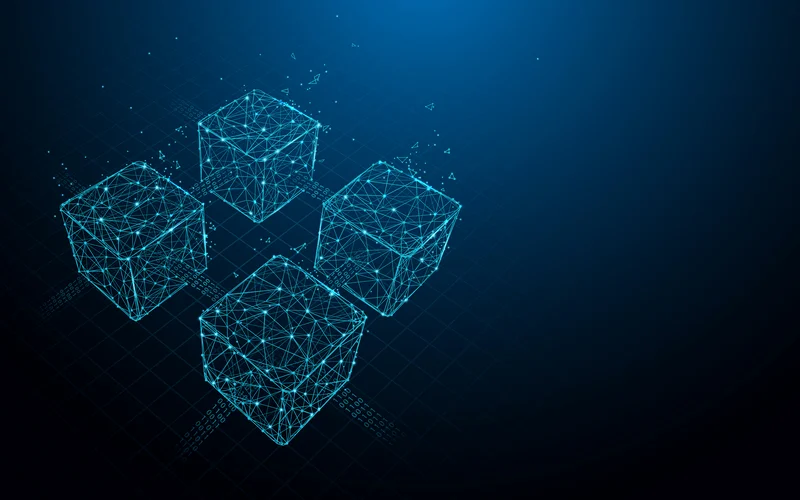Natural Language Processing Nlp: What Is It & How Does It Work?
In 2019, artificial intelligence company Open AI released GPT-2, a text-generation system that represented a groundbreaking achievement in AI and has taken the NLG subject to an entire new stage. The system was educated with a large dataset of eight million web pages and it’s in a position to generate coherent and high-quality items of textual content (like news articles, tales, or poems), given minimal prompts. Natural Language Generation (NLG) is a subfield of NLP designed to build laptop methods or functions that may routinely produce every kind of texts in pure language by utilizing https://www.globalcloudteam.com/ a semantic illustration as input. Syntactic evaluation, also referred to as parsing or syntax analysis, identifies the syntactic structure of a textual content and the dependency relationships between words, represented on a diagram known as a parse tree. While NLP and other forms of AI aren’t perfect, pure language processing can bring objectivity to knowledge analysis, providing extra correct and consistent outcomes. Now that we’ve realized about how natural language processing works, it’s important to grasp what it might possibly do for companies.
It also contains libraries for implementing capabilities similar to semantic reasoning, the power to achieve logical conclusions based mostly on facts extracted from textual content. The next wave of NLP advancements got here with the widespread adoption of machine studying techniques. Support Vector Machines (SVMs) have been employed extensively in textual content categorization tasks, while Random Forests had been used for a selection of classification and regression tasks. Additionally, Reinforcement Learning discovered purposes in dialogue methods and different interactive NLP applications.
GPT-3 was the foundation of ChatGPT software program, launched in November 2022 by OpenAI. ChatGPT virtually instantly disturbed teachers, journalists, and others due to issues that it was unimaginable to differentiate human writing from ChatGPT-generated writing. NLP is a fancy area, and there’s examples of nlp nonetheless a lot analysis to be done to have the ability to develop more practical methods for teaching computer systems to know and course of human language. However, the potential purposes of NLP are vast, and the sector holds great promise for the future of AI.
Stemming
In the domain of human-computer interaction, it’s the technology behind voice-operated methods like voice assistants. These methods are used for a variety of straightforward tasks, from net searches to house automation, and have been integrated into quite a few client electronics. NLP additionally drives the automated customer support options found in varied industries, changing or supplementing human-operated call facilities. Natural language processing is transforming the finest way we analyze and interact with language-based information by coaching machines to make sense of textual content and speech, and carry out automated tasks like translation, summarization, classification, and extraction. They use extremely trained algorithms that, not solely search for associated words, however for the intent of the searcher. Results often change on a daily basis, following trending queries and morphing proper along with human language.

It is what allows computer systems to understand the that means of what we say and carry out commands accordingly. There is no doubt that synthetic intelligence (AI) is rapidly evolving and growing extra refined every single day. With the speedy expansion of AI capabilities, many specialists are predicting that natural language programming (NLP) will turn out to be more and more necessary in the future.
Deep Studying Models
Although there are doubts, natural language processing is making significant strides within the medical imaging subject. Learn how radiologists are using AI and NLP of their follow to review their work and evaluate circumstances. Most higher-level NLP applications involve elements that emulate clever behaviour and apparent comprehension of natural language. More broadly talking, the technical operationalization of more and more advanced features of cognitive behaviour represents one of the developmental trajectories of NLP (see developments amongst CoNLL shared duties above). Neural machine translation, based on then-newly-invented sequence-to-sequence transformations, made obsolete the intermediate steps, corresponding to word alignment, beforehand essential for statistical machine translation. Information retrieval is a dynamic subject, regularly evolving with developments in know-how and user conduct.
Below, you possibly can see that most of the responses referred to “Product Features,” followed by “Product UX” and “Customer Support” (the last two topics were talked about principally by Promoters). You typically only need to sort a couple of letters of a word, and the texting app will suggest the proper one for you. And the extra you text, the more correct it turns into, often recognizing commonly used words and names quicker than you can type them.

Despite advances in machine learning and computational power, present NLP applied sciences still want to realize the deep understanding of language that humans possess. Tasks like sarcasm detection, understanding humor, or decoding emotional nuance still have to be completed in the scope of present systems. One of the significant challenges in NLP is dealing with the inherent ambiguity in human language. This contains lexical ambiguity (same word, completely different meanings), syntactic ambiguity (same phrase, totally different structures), and semantic ambiguity (same sentence, completely different interpretations). The shift in course of statistical methods started to take shape within the 1980s with the introduction of machine learning algorithms and the development of large-scale corpora like the Brown Corpus.
Natural Language Processing (NLP) involves primary tasks in Text Mining activities, especially if they are focused at concept extraction. One of the research objective in NLP is to generate computational fashions that simulate human linguistic abilities (reading, writing, listening and speaking). As of 2017, over 23 million references to biomedical literature are included within the MEDLINE database, and this quantity is growing at the rate of greater than seven hundred,000 each year (see “Relevant Websites section”).
Human Sources
Advances have been made in numerous core tasks corresponding to language modeling, parsing, and sentiment analysis. However, challenges nonetheless must be addressed, significantly concerning ambiguity in language, social and cultural context, ethics, and limitations in current technology. NLP combines computational linguistics—rule-based modeling of human language—with statistical, machine learning, and deep studying models. Together, these technologies enable computers to course of human language in the form of textual content or voice information and to ‘understand’ its full meaning, complete with the speaker or writer’s intent and sentiment.
It is an interdisciplinary area that combines linguistics, computer science, and synthetic intelligence. The panorama of NLP noticed a significant transformation with the arrival of deep learning algorithms. Recurrent Neural Networks (RNNs) and their extra advanced variations, such as Long Short-Term Memory (LSTM) items and Gated Recurrent Units (GRUs), turned the go-to algorithms for sequence prediction issues. Attention mechanisms notably improved the efficiency of machine translation methods. Models like BERT (Bidirectional Encoder Representations from Transformers) and GPT (Generative Pre-trained Transformer) set new performance benchmarks throughout a variety of NLP duties.
Although rule-based systems for manipulating symbols had been still in use in 2020, they have turn into mostly obsolete with the advance of LLMs in 2023. IBM has launched a new open-source toolkit, PrimeQA, to spur progress in multilingual question-answering systems to make it simpler for anyone to shortly find info on the internet. As we transfer by way of the 2020s, ethical concerns similar to equity, accountability, and transparency come to the forefront, together with extra advanced real-world functions like automated journalism, advanced conversational agents, and more. The greatest introductory guide to NLP’ you will study every little thing that you want to learn about NLP.
In NLP, Machine Translation is liable for translating text mechanically from one language to another. This subfield is instrumental in offering translation providers and facilitating multilingual assist in global functions. Similarly, Speech Recognition converts spoken language into written text and is integral to voice-activated methods and transcription services. NLP combines the sphere of linguistics and laptop science to decipher language structure and tips and to make models which might comprehend, break down and separate significant particulars from textual content and speech.

These two sentences imply the precise same thing and the use of the word is similar. For instance, the stem for the word “touched” is “touch.” “Touch” can be the stem of “touching,” and so on. With construction I mean that we’ve the verb (“robbed”), which is marked with a “V” above it and a “VP” above that, which is linked with a “S” to the topic (“the thief”), which has a “NP” above it. This is like a template for a subject-verb relationship and there are numerous others for different forms of relationships. Below is a parse tree for the sentence “The thief robbed the apartment.” Included is a description of the three totally different information types conveyed by the sentence.
ELIZA, for instance, mimicked a Rogerian psychotherapist by utilizing pre-defined guidelines to reply to person inputs. Meanwhile, SHRDLU demonstrated extra complicated language understanding but was limited to a particular planning area often identified as “blocks world.” The technology also has international functions, notably machine translation services facilitating cross-language communication. In academia, NLP tools are employed for textual analysis and knowledge mining, offering a way to glean insights from giant knowledge sets.
- Summarization and query answering remain matters for further research, and are still in their infancy, so far as with the ability to take care of a broad vary of doc varieties.
- The following is a listing of some of the mostly researched duties in pure language processing.
- Evidently, human use of language includes some sort of parsing and generation course of, as do many natural language processing functions.
Text summarization strategies depend on NLP to condense prolonged texts into more manageable summaries. These functions goal to make processing giant amounts of knowledge extra efficient. After performing the preprocessing steps, you then give your resultant knowledge to a machine learning algorithm like Naive Bayes, and so on., to create your NLP software. Natural Language Processing or NLP refers to the department of Artificial Intelligence that provides the machines the ability to read, perceive and derive meaning from human languages.
This supplies a way of dealing with the two drawbacks of nonstochastic approaches. Ill-formed alternatives may be characterized as extraordinarily low probability rather than ruled out as impossible, so even ungrammatical strings may be supplied with an interpretation. Similarly, a stochastic mannequin of potential interpretations of a sentence provides a method for distinguishing extra believable interpretations from less believable ones. Gate [Gate] is a textual content processing framework which mixes data-driven (words that describe concepts) and knowledge-driven (relations that hyperlink concepts) approaches to find a way to find a link with Semantic Web approaches. SaaS tools, however, are ready-to-use options that allow you to incorporate NLP into instruments you already use merely and with very little setup.
Natural language processing is the use of computers for processing pure language textual content or speech. Machine translation (the automatic translation of textual content or speech from one language to another) started with the very earliest computers (Kay et al. 1994). Natural language interfaces permit computers to interact with people using pure language, for instance, to query databases. Coupled with speech recognition and speech synthesis, these capabilities will become more necessary with the growing reputation of portable computer systems that lack keyboards and huge show screens. Other applications embrace spell and grammar checking and doc summarization. Applications outdoors of natural language include compilers, which translate supply code into lower-level machine code, and pc vision (Fu 1974, 1982).
